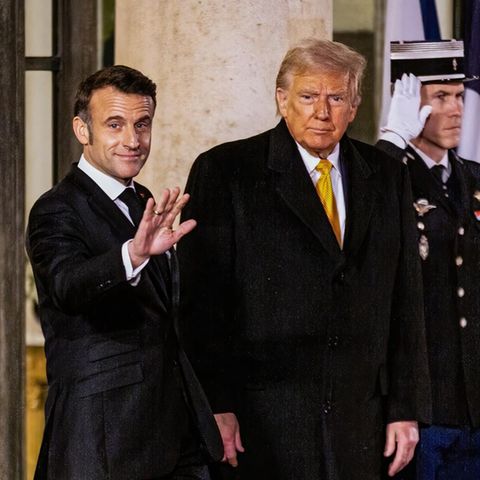“Liberation Day”
Trump’s tariffs: which already apply and what could still come to us
Copy the current link
Add to the memorial list
US President Donald Trump recently referred to April 2 as the “day of liberation”-he should continue his aggressive customs policy. An overview.
Trump calls this day “liberation day”: The US head of state has signed plans for far-reaching so-called reciprocal tariffs, which could affect US opponents like allies. As the reasons, he leads “unfair trade”, lack of fighting the irregular migration and the smuggling of the fatal drug fentanyl to the USA.
The idea is that a product of a country is loaded with as high surcharges to the United States on delivery to the USA as an equal US product when delivering to this country. However, the United States not only want to include the tariffs, but also so -called non -tariffs such as subsidies or regulations in the calculation.
Venezuela and Russia
In addition, Trump announced a drastic punitive tariff against countries for April 2, the oil and gas from Venezuela. This measure could particularly hit China and India, where the South American country had relocated to part of its exports under the pressure of US sanctions.
With his customs policy, Trump also wants to intervene in the Ukraine conflict. He threatened the Russian President Vladimir Putin in the event that there is no agreement on the end of the war to prove the buyers of Russian oil with tariffs.
Cars and auto parts
At the end of March, Trump announced additional tariffs to auto imports that will be due from April 3.. The serves apply to cars and light commercial vehicles. Auto parts should also fall later. For vehicle imports that fall under the North American USMCA free trade agreement with Canada and Mexico, a low duty rate can apply depending on the proportion produced in the USA.
Steel and aluminum
Since March 12, US tariffs of 25 percent have been on steel and aluminum imports. The United States imports about half of the steel and aluminum used in the country. Canada is in the first place of the suppliers, followed by Brazil, then the EU.
Canada reacted with additional surcharges to US goods worth almost $ 21 billion, including steel and aluminum products and different goods such as computers and sports equipment. In the meantime, the province of Ontario demanded an additional payment of 25 percent to electricity exports in three US states, whereupon Trump threatened a doubling of the steel tariffs. Both sides pulled their threats back later.
The EU also responded with countermeasures to selected US products such as jeans, whiskey and motorcycles, which should initially reach from April 1st. However, their start was postponed to mid -April, and negotiations are still to be made. Brussels wants to expand the surcharges if necessary.
Wine, champagne and other alcoholic
One reason for the shift should be Trump’s threat of tariffs of 200 percent on alcoholic drinks such as wine and champagne. That would be an enormous blow to the European market: According to the World Trade Organization WTO 2023, Europe delivered wine and champagne worth almost 5.2 billion euros to the USA. Trump’s threat was an answer to the countermeasures of the EU, such as the tariffs on whiskey.
The North American back and forth
The first tariffs met the two North American free trade partners of the United States, Mexico and Canada shortly after Trump’s inauguration. Penal tariffs in the amount of usually 25 percent should initially be due from February 1st. But only hours before the entry into force, Trump agreed to add a month.
A month later, on March 4, the US tariffs then came into force on Mexican imports and Canadian imports – until Trump stopped them three days later in most cases for one month. The deletion applies to products that fall under the Usmca free trade agreement. Thereupon Canada postponed a second round of retaliation on US goods in the amount of $ 87 billion.
China
China received no delay from Trump. Since February 4, customs duties of ten percentage points have also apply to Chinese imports to the United States, and on March 4, they were increased to 20 percent. China is the country with which the United States have the greatest trade deficit.
Beijing reacted with countermeasures and imposed new tariffs of ten and 15 percent to a number of agricultural products such as soybeans and millet as well as energy products from the USA.
AFP
LW
Source: Stern
I have been working in the news industry for over 6 years, first as a reporter and now as an editor. I have covered politics extensively, and my work has appeared in major newspapers and online news outlets around the world. In addition to my writing, I also contribute regularly to 24 Hours World.





